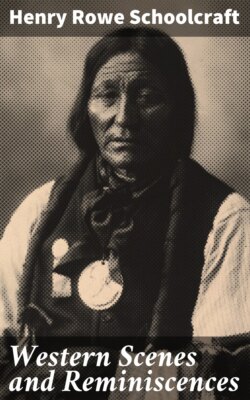Читать книгу Western Scenes and Reminiscences - Henry Rowe Schoolcraft - Страница 31
На сайте Литреса книга снята с продажи.
THE FLIGHT OF THE SHAWNEES FROM THE SOUTH.
ОглавлениеTable of Contents
A MOHEGAN TRADITION.
Metoxon states, that the Shawnees were, in ancient times, while they lived in the south, defeated by a confederacy of surrounding tribes, and in danger of being totally cut off and annihilated, had it not been for the interference of the Mohegans and Delawares. An alliance between them and the Mohegans, happened in this way. Whilst the Mohegans lived at Schodack, on the Hudson river, a young warrior of that tribe visited the Shawnees, at their southern residence, and formed a close friendship with a young warrior of his own age. They became as brothers, and vowed for ever to treat each other as such.
The Mohegan warrior had returned, and been some years living with his nation, on the banks of the Chatimac, or Hudson, when a general war broke out against the Shawnees. The restless and warlike disposition of this tribe, kept them constantly embroiled with their neighbours. They were unfaithful to their treaties, and this was the cause of perpetual troubles and wars. At length the nations of the south resolved, by a general effort, to rid themselves of so troublesome a people, and began a war, in which the Shawnees were defeated, battle after battle, with great loss. In this emergency, the Mohegan thought of his Shawnee brother, and resolved to rescue him. He raised a war-party and being joined by the Lenapees, since called Delawares, they marched to their relief, and brought off the remnant of the tribe to the country of the Lenapees. Here they were put under the charge of the latter, as their grandfather.
They were now, in the Indian phrase, put between their grandfather’s knees, and treated as little children. Their hands were clasped and tied together—that is to say, they were taken under their protection, and formed a close alliance. But still, sometimes the child would creep out under the old man’s legs, and get into trouble—implying that the Shawnees could never forget their warlike propensities.
The events of the subsequent history of this tribe, after the settlement of America are well known. With the Lenapees, or Delawares, they migrated westward.
The above tradition was received from the respectable and venerable chief, above named, in 1827, during the negotiation of the treaty of Buttes des Morts, on Fox river. At this treaty his people, bearing the modern name of Stockbridges, were present, having, within a few years, migrated from their former position in Oneida county, New York, to the waters of Fox river, in Wisconsin.
Metoxon was a man of veracity, and of reflective and temperate habits, united to urbanity of manners, and estimable qualities of head and heart, as I had occasion to know from several years’ acquaintance with him, before he, and his people went from Vernon to the west, as well as after he migrated thither.
The tradition, perhaps with the natural partiality of a tribesman, lays too much stress upon a noble and generous act of individual and tribal friendship, but is not inconsistant with other relations, of the early southern position, and irrascible temper of the Shawnee tribe. Their name itself, which is a derivative from O-shá-wan-ong, the place of the South, is strong presumptive evidence of a former residence in, or origin from, the extreme south. Mr. John Johnston, who was for many years the government agent of this tribe at Piqua, in Ohio, traces them, in an article in the Archælogia Americana (vol. 1, p. 273) to the Suwanee river in Florida. Mr. Gallatin, in the second volume of the same work (p. 65) points out their track, from historical sources of undoubted authority, to the banks of the upper Savannah, in Georgia; but remarks that they have only been well known to us since 1680. They are first mentioned in our scattered Indian annals, by De Laet, in 1632.
It may further be said, in relation to Metoxon’s tradition, that there is authority for asserting, that in the flight of the Shawnees from the south, a part of them descended the Kentucky river west, to the Ohio valley, where, in after times, the Shawnees of Pennsylvania and New Jersey, rather formed a re-union with this division of their kindred than led the way for them.
To depart one step from barbarism, is to take one step towards civilization. To abandon the lodge of bark—to throw aside the blanket—to discontinue the use of paints—or to neglect the nocturnal orgies of the wabeno, are as certain indications of incipient civilization, as it unquestionably is, to substitute alphabetical characters for rude hieroglyphics, or to prefer the regular cadences of the gamut, to the wild chanting of the chichigwun.
